We're always being told that classics from the '50s, '60s & '70s are getting more and more valuable by the year, but is it the case with Triumph TRs?
Words by Charlie Calderwood from https://www.classiccarauctionresults.co.uk
No, sure, no one likes seeing classics bought purely for investment purposes. But everyone cares about the value of their possessions and if you can 'earn' money on something you're enjoying in the meantime, why not?
Of course, we're all told that any classic is bound to increase in value once its past that difficult 'banger' period in its life. Roadsters like the TR, car-show conventional wisdom tells us, are exactly the kind of classics that are leading the trend too. Mass appeal, sporty handling and ease of maintenance are what sent classic Ford values crazy, right?

TR2
TRs don't necessarily follow the rule many models do, where the oldest cars are always the most valuable, but TR2 owners will be pleased to see substantial growth in the value of their cars over the past 15 years.
Not since 2009 has a TR2 been picked up at auction for less than £10k, while Historics at Brooklands sold a 'long door' TR2 for more than £40,000 this March.
The data shows clear growth far above the rate of inflation, and with records still being broken, the trend doesn't seem close to ending just yet.

TR3
Reflecting its similarity to the TR2 it replaced, TR3 values are now little different to their older siblings. While the £40k barrier does not appear to have been broken at auction just yet, top condition 'TR3As' are reliably fetching figures well over £30k.
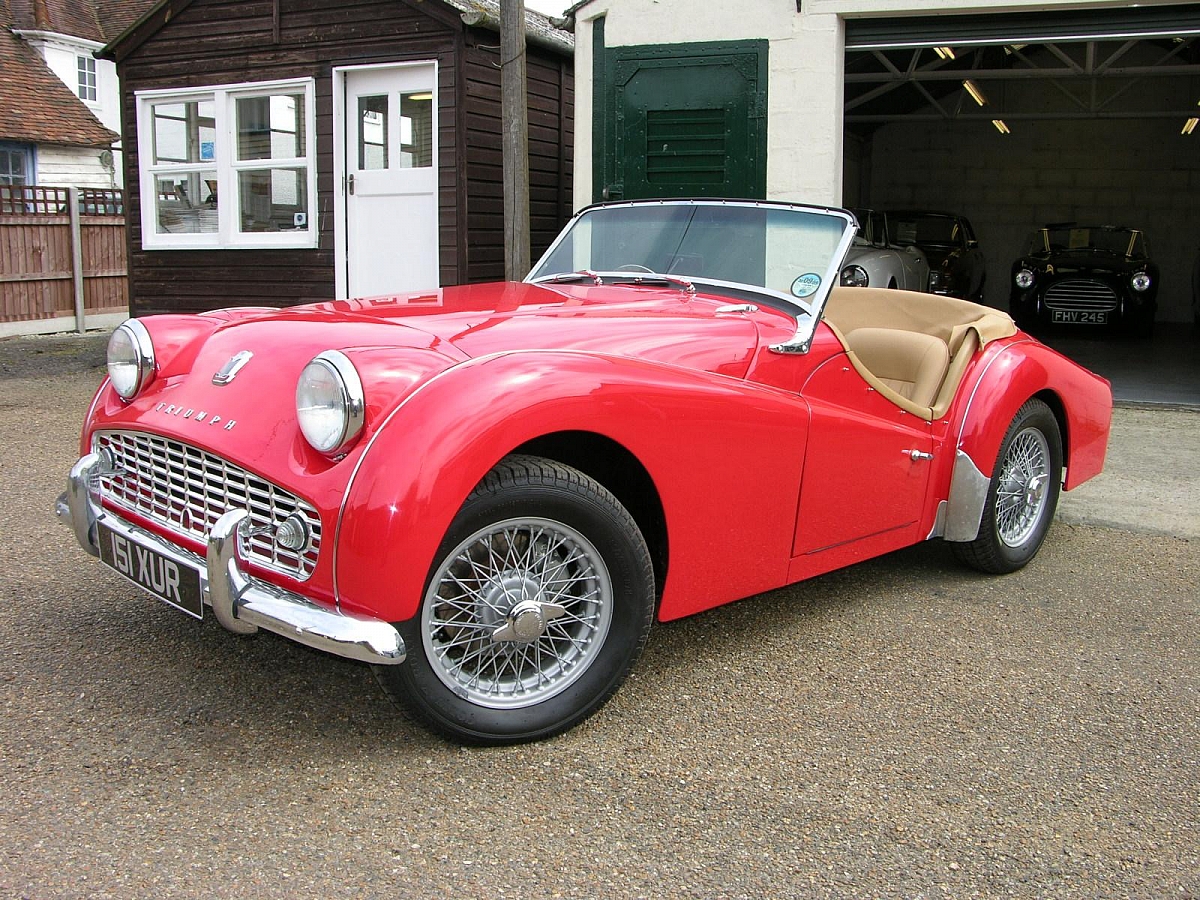
So too, it seems difficult to find even 'barn finds' for less than £10k, at least at auction. Still, the majority of cars have traded for around £20k in the past couple of years, which is twice the going price at the turn of the millennium.
As with the TR2, long-term TR3 owners will have struggled not to gain wealth via their car's appreciation, although one could argue the data shows a plateau in the last two or three years.
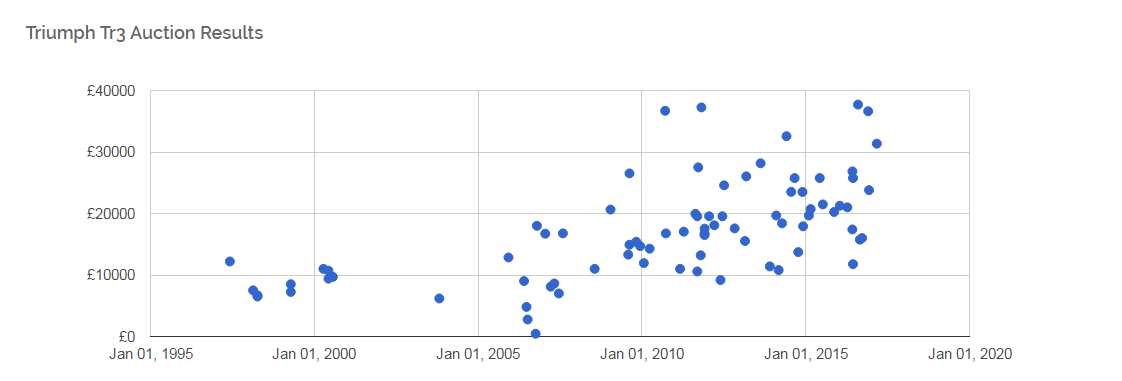
TR4
With its much more modern appearance, it's not a surprise to see TR4 values have behaved somewhat differently to the TR2 & TR3 in recent years.
Growth is still clear to see in the past 15 years, and sub-£10k cars are only to be found in 'restoration required' condition at auction. However, the TR4 has not reached the dizzying heights of some TR3s just yet, with cars fetching over £30k in the UK still a rare occasion.
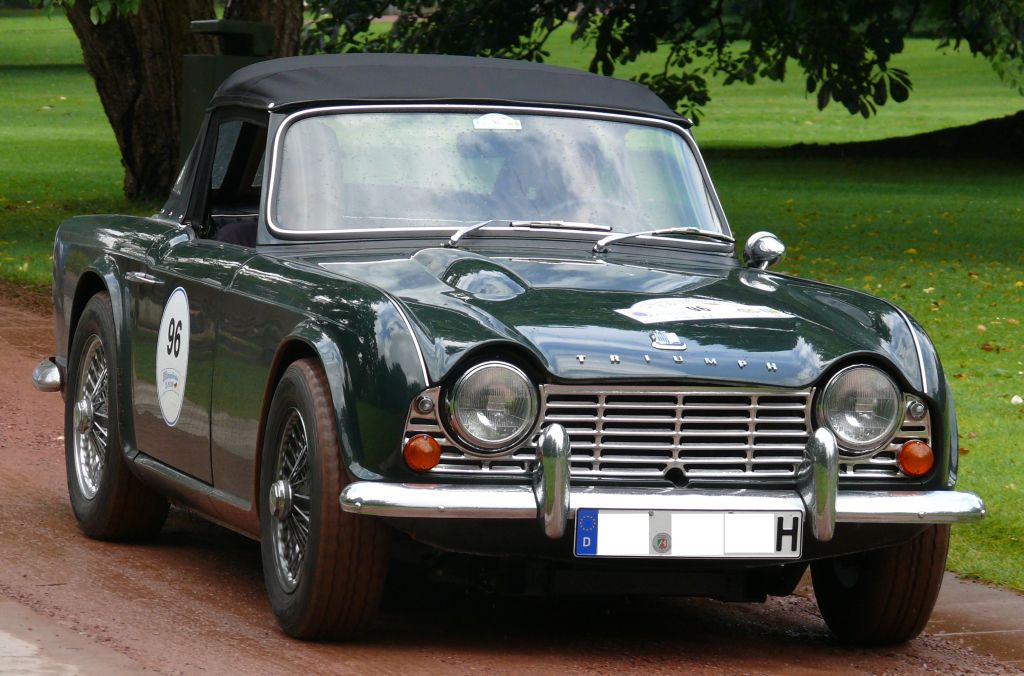
Values, at least for the best condition cars, seem noticeably higher in the US however, which is surprising given TRs general prevalence in the US market.
The majority of TR4s are fetching similar prices to run-of-the-mill TR3s, despite the disparity at the top-end of the market, fetching low to mid £20k sums. This suggests the TR4 is not gaining the attention of collectors in quite the same way as the TR3.
Another noticeable trend, is that all the highest-priced cars came with a 'surrey top' - the accessory seemingly increasing the price of the car by more than just the sum of its value. Interestingly, there seems no significant difference between TR4 and TR4A models, with condition being by far the largest differentiator.
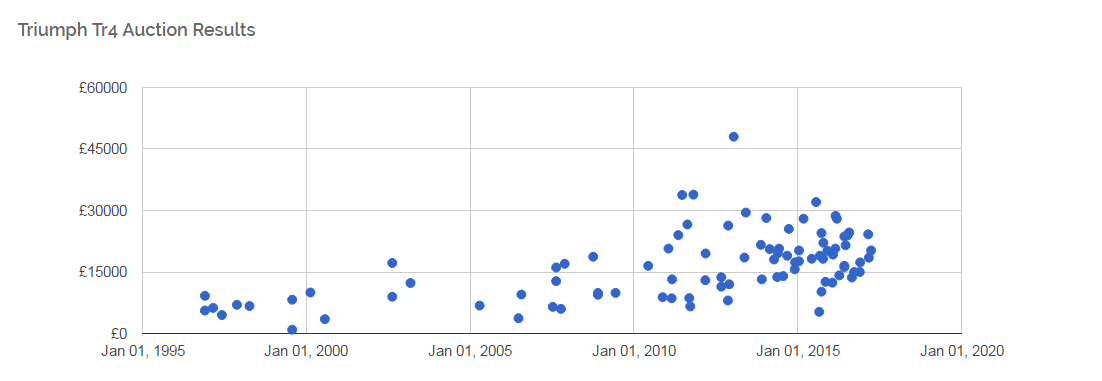
TR5
Data on the TR5 is relatively sparse, reflecting the model's short production run of just a year. This rarity, combined with the model occupying a perceived 'sweet spot' in TR history between classic '60s styling and the powerful 2.5 straight six, makes the TR5 the most valuable of all the TRs.
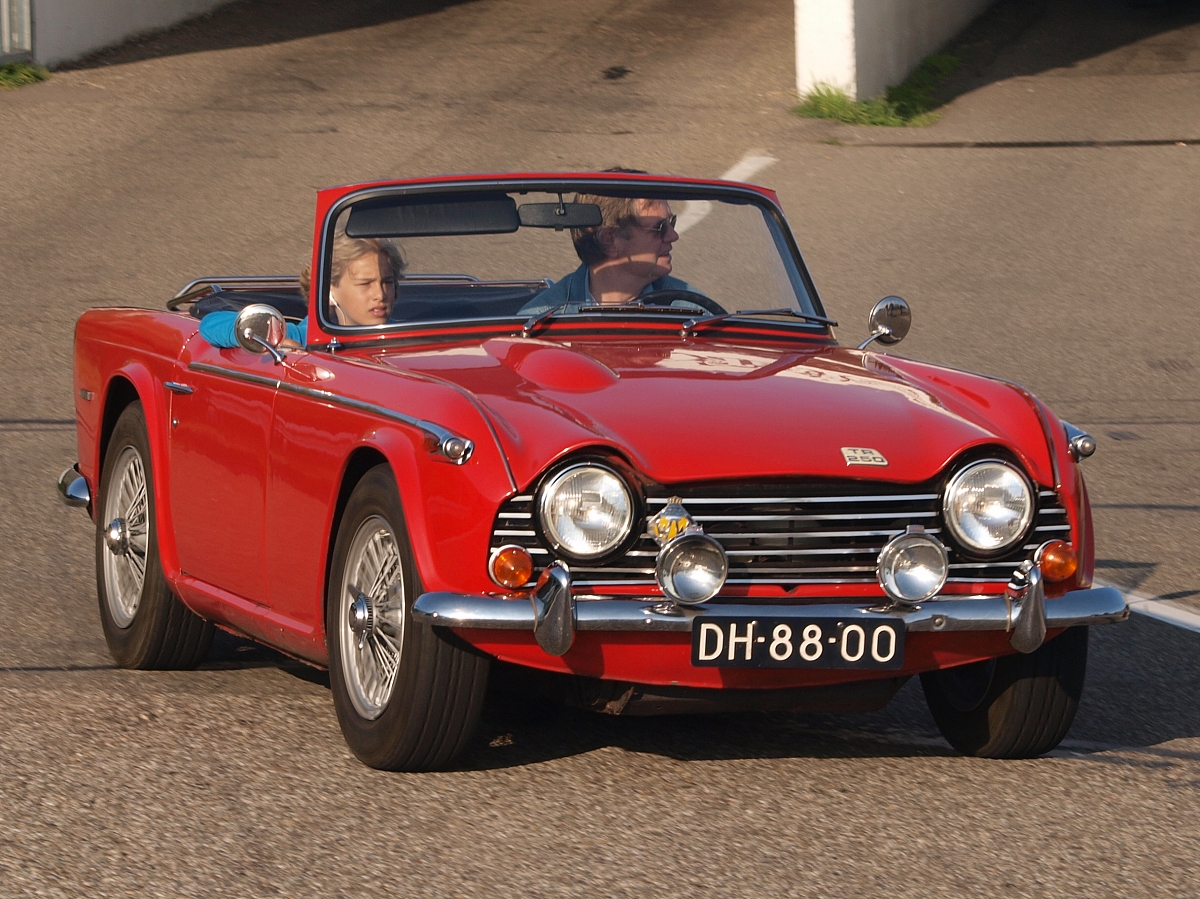
With exceptional cars selling for over £40k and one restoration project fetching £18k in 2015, this high valuation seems to extend from rough cars to concours examples. Indeed, the average price for something in good condition seems notably higher than that of the TR5's predecessors, at around £30k.
What we can't discern from the data, is the long-term movement in TR5 prices, due to the lack of entries from before 2014.

TR6
The TR6's success for Triumph is immediately obvious from the sheer amount of data on the car, but it is this same prevalence that used to keep TR6 values relatively tame compared to its predecessors.
It seems that time has passed.

While there are still plenty of TR6s selling under £10k, you'll only find restoration cases or (if you're lucky) LHD US import cars for that price nowadays.
With low mileage TR6s fetching £30k, the car is now catching up with the four-cylinder TRs, although the majority of cars sell for nearly half that price.
While the outright value of the TR6 is nothing amazing just yet then, the growth of prices truly has been. Even in just the past 10 years, long-term TR6 owners will have seen the value of their cars almost double.
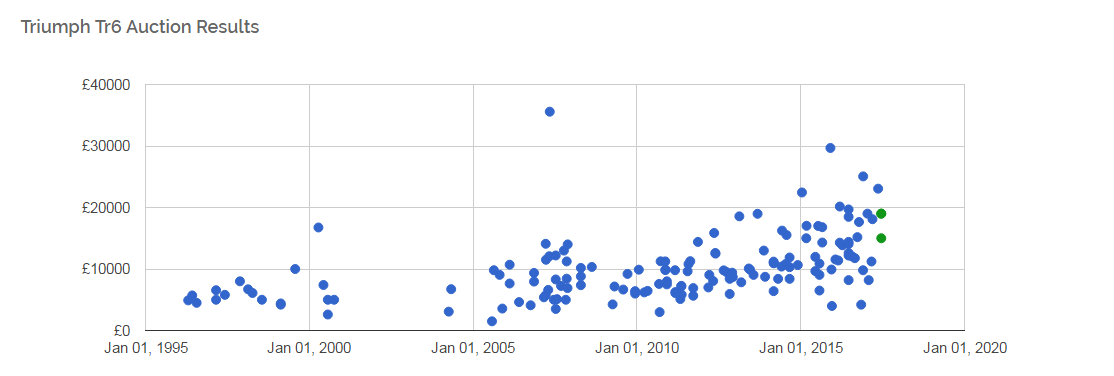
TR7
The TR7 remains by far the cheapest TR you can buy, it's modern styling seemingly making it far less desirable than all of the other TRs.
But has the little wedge seen its value increase as its predecessors have done? iIt is hard to say definitively with the data available, but the indications are good.
For example, in 2007 an immaculate low mileage FHC sold for just £1,800. Just nine years later, a FHC with a condition score of just 67/135 sold for £1,710 - an almost identical sum. When restoration cases are worth as much as yesterday's concours cars, you know something is moving in the market.
The convertibles and V8s remain more valuable still, but it seems even the hard topped version of the youngest TR has seen growth, albeit far less spectacularly than earlier models.

Summary
Overall then, it's clear that Triumph TRs have indeed been apart of the classic car boom of the last 10 years, with most TRs having nearly doubled in value when comparing like-for-like examples. Values are remarkably similar across the first 3 generations of the TR, while the TR5 and TR6 hardly buck trends either.
The odd-one-out of the TR range, in yet another way, proves to be the TR7. It's astounding how a TR7 which could even be older than some TR6s (their production having briefly overlapped) could be worth a tenth of the value of the TR6 when in similar condition.
It goes to prove that the nebulous concept of desirability, not condition, age, capability or even supply to a degree, is by far the main factor in deciding a classic's value.
To follow auction results more closely visit: https://www.classiccarauctionresults.co.uk
You can also track values and find more information from our buyers guides: https://www.tr-register.co.uk/tr-buyers-guides
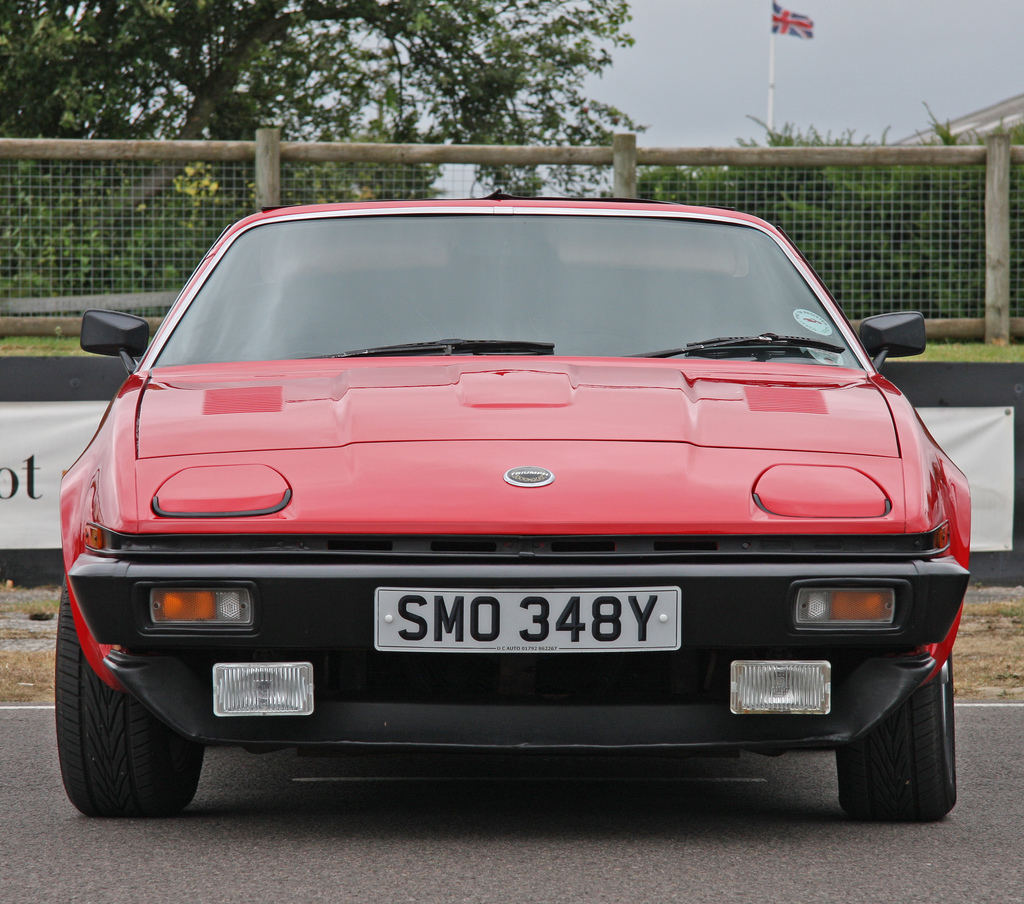
There are no comments on this thread
Use the box below to leave your comments and feedback on the articles above. Please be aware that in some cases comments will be sent to a moderator for approval before going live. The admin team reserve the right to remove comments with inappropriate or offensive content.
If you have an enquiry or a question about any of the articles, either click the author name to contact directly or get in touch with the TR Register.
Comment notes
Please keep the discussion friendly. Reply's are limited to 2 - if you have more to say why not contact the office, start a thread on the TR Register Forum or start your own Owners Diary.